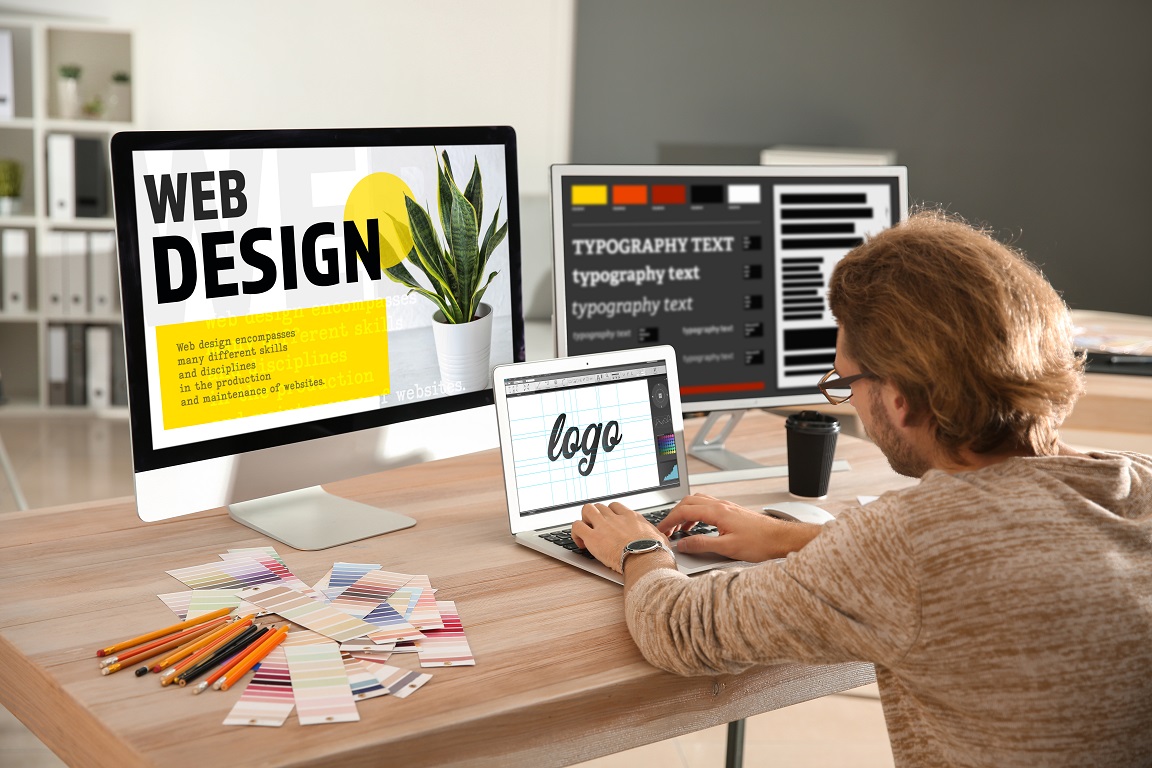Understanding Website Design: Trick Principles for a User-Friendly Website
In the world of internet style, the focus on user experience has actually ended up being critical, shaping how web sites are constructed and regarded. As we explore these fundamental components, it comes to be noticeable that the decisions made throughout the style process can have enduring ramifications on a site's efficiency and customer commitment.

Value of User Experience
In the realm of internet design, the significance of user experience (UX) can not be overemphasized. UX incorporates the general contentment a customer originates from engaging with a site, dramatically influencing their assumption of a brand and their likelihood of returning. web design klerksdorp. A well-designed UX promotes smooth navigating, cultivates user interaction, and ultimately drives conversions
Understanding individuals' needs and actions is vital in developing an efficient UX. This involves leveraging research study methods such as individual personalities, journey mapping, and functionality testing to obtain insights into customer choices. By customizing style aspects to meet these requirements, designers can boost functionality and create an extra instinctive communication.
Moreover, a favorable UX adds to the site's credibility and reliability. Users are more probable to engage with a site that is visually pleasing and easy to browse, which consequently enhances brand loyalty. Alternatively, an inadequate UX can result in high bounce prices and an adverse perception of the brand.
Intuitive Navigation Design
A reliable navigation layout is critical for directing customers via an internet site, guaranteeing they can discover the information they need promptly and efficiently. Intuitive navigating boosts user experience by allowing seamless communication with content, resulting in enhanced interaction and fulfillment.
To accomplish intuitive navigating, it is necessary to establish a clear pecking order. This entails organizing web content into logical groups and subcategories, allowing customers to recognize the framework at a glance. Descriptive tags for menu items are vital; they need to be straightforward and rep of the web content they bring about, decreasing obscurity.
Uniformity is another key concept. Users must encounter familiar navigating elements throughout the site, such as the placement of menus and buttons. This consistency aids strengthen individual expectations and reduces cognitive tons.
Furthermore, integrating search capability can dramatically boost navigation, particularly for content-heavy internet sites. This feature encourages customers to locate certain details quickly without having to browse with several web pages.
Finally, use testing can provide vital insights into just how genuine customers interact with navigation elements, offering possibilities for improvement. Altogether, a well-designed navigating system is foundational to an user-friendly site, advertising effectiveness and boosting general individual complete satisfaction.
Responsive Website Design
Receptive internet style is significantly important in today's electronic landscape, as it makes certain that web sites supply optimal seeing experiences across a wide variety of tools, from desktop computer computer systems to smart devices. This method enables a single website to adapt its format and web content Check Out Your URL to fit different screen dimensions and resolutions, boosting functionality and accessibility.
At the core of responsive layout is fluid grid formats, which make use of family member units like percentages as opposed to fixed pixels. This versatility allows elements to resize proportionally, keeping visual harmony and performance. Furthermore, media inquiries play an important Discover More Here role by applying certain CSS designs based on gadget attributes, such as display width or alignment.
Incorporating receptive media and adaptable photos is additionally important; these aspects need to scale properly to protect against distortion and ensure a smooth experience throughout tools. Touch-friendly design factors to consider are paramount, particularly for mobile individuals, as they usually navigate via touch gestures rather than clicks. web design klerksdorp.
Constant Visual Aspects
Constant visual elements are crucial for establishing a cohesive brand name identification and enhancing user experience throughout digital platforms. These elements include color design, layout, typography, and imagery designs, which collectively develop a combined aesthetic that individuals can conveniently associate and acknowledge to. A well-defined shade palette not only enhances brand acknowledgment but likewise evokes certain feelings, directing individuals via the site effectively.
Typography plays a significant function in readability and total aesthetic appeal. Making use of a limited number of fonts and keeping regular sizes and weights ensures an unified circulation of info. Imagery should also straighten with brand name worths and messaging; premium images that fit the general you can find out more style will certainly boost the website's good looks and professionalism.
Users need to feel comfortable and oriented as they explore numerous sections of the internet site. Ultimately, a properly designed internet site, characterized by natural visual components, mirrors expertise and constructs trust fund with customers, producing a favorable initial impact and encouraging return sees.
Ease Of Access Factors To Consider
Making sure ease of access in internet style is a basic element that enhances regular aesthetic elements, permitting all users, regardless of their capacities, to browse and connect with digital material efficiently. Accessibility considerations are critical for creating inclusive web sites that meet the varied requirements of customers, including those with disabilities.
To start with, utilizing semantic HTML is essential, as it assists display visitors translate the structure and material of a web page precisely. Alt text for images boosts comprehension for visually damaged customers, while captioning video clip content makes certain that those with hearing disabilities can engage with the material.
Additionally, color contrast must be thoroughly examined to aid customers with visual impairments. Making certain that message is clear against its history improves readability. Additionally, key-board navigability is important; all interactive aspects need to come without a computer mouse, dealing with individuals with movement difficulties.
Conclusion
In verdict, understanding internet layout requires an extensive understanding of user experience principles. Prioritizing these facets not only boosts customer interaction and satisfaction however likewise cultivates brand commitment.

In verdict, grasping internet style demands a detailed understanding of customer experience concepts.